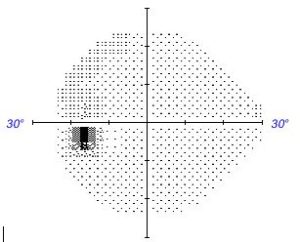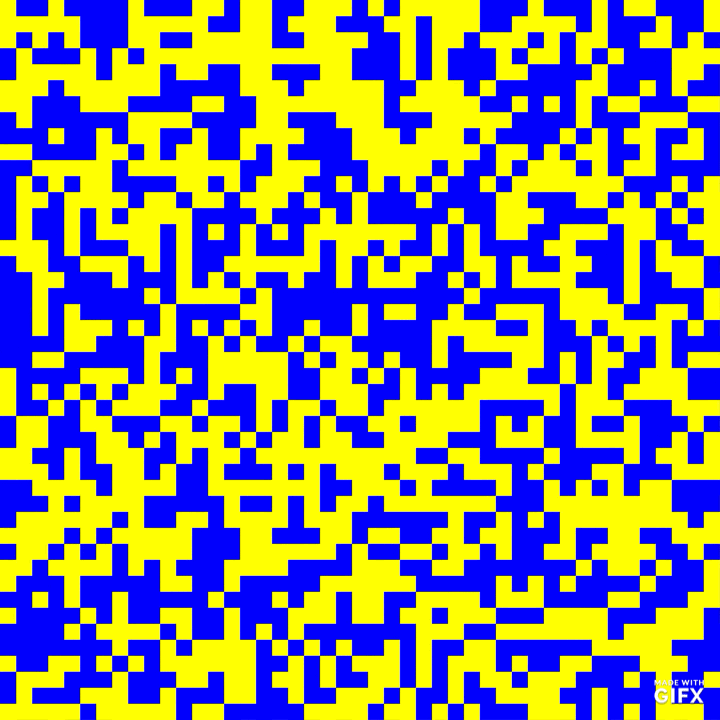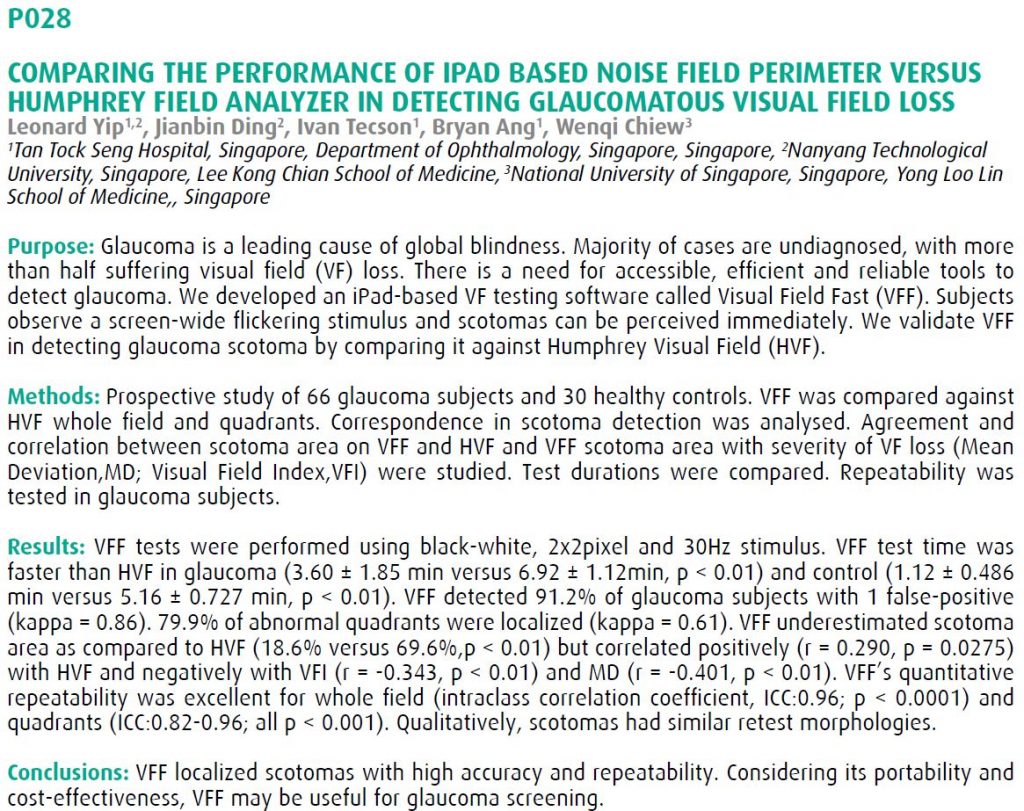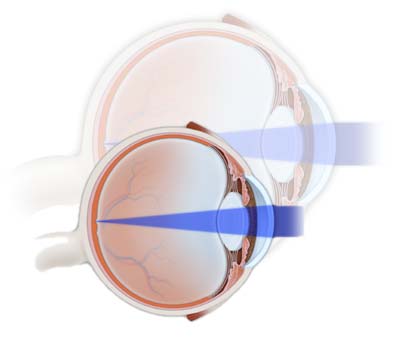This is an App that was designed to detect vision problems.
It should be used under the supervision of an ophthalmologist, optometrist or ophthalmic technician.
A simple layman’s explanation of how it works
Consider the 2 physiological blind spots in our vision. It is due to the lack of photoreceptors at the optic nerve. Yet we do not notice these areas of missing vision.

It is thought that the brain “Fills in” the defect.
The brain perceptually bridges gaps by interpolating surround features and thus restores a retinal image that is incomplete.
It may also be doing the same for incomplete images due to retinal, optic nerve or central nervous system conditions.
However, if the stimulus is inherently dynamic and unpredictable. the “Fill in” is imperfect.

The viewer with the incomplete image now perceives the hampered attempt at “Fill in” as the dark area that it ought to be. The viewer in fact sees their visual field defects for maybe the first time.
The science behind the app
The app draws its inspiration from noise field campimetry or snowfield perimetry. More information about how the technology evolved can be found at this website on White Noise Field Campimetry. Visual field defects due to glaucoma, neurological disease, and age-related macular degeneration (AMD) have been studied using this form of perimetry.
Current scientific status of the app
The best stimulus to overcome “Fill in” depends on the nature of the condition. This is research currently underway.
Research is also ongoing to validate findings on Visual Field Fast vs standard automated perimetry in detecting various eye diseases.
Publications and presentations for glaucoma (as of 2021)
The performance of Visual Field Fast (VFF) as a visual field testing device was compared to Humphrey Visual Field (HVF) in Glaucoma patients and Normal Controls.
This poster was presented at the14th European Glaucoma Society Congress 12-13 December 2020 (abstract below)

The full scientific paper cited below, recently published, can be read in the Journal ‘Eye’ here
Ding J, Tecson IC, Ang BCH, Chiew W, Chua C, Yip LWL. The performance of iPad-based noise-field perimeter versus Humphrey Field Analyser in detecting glaucomatous visual field loss. Eye (Lond). 2021 Apr 20:1–12. doi: 10.1038/s41433-021-01541-x. Epub ahead of print. PMID: 33879855; PMCID: PMC8056996.
